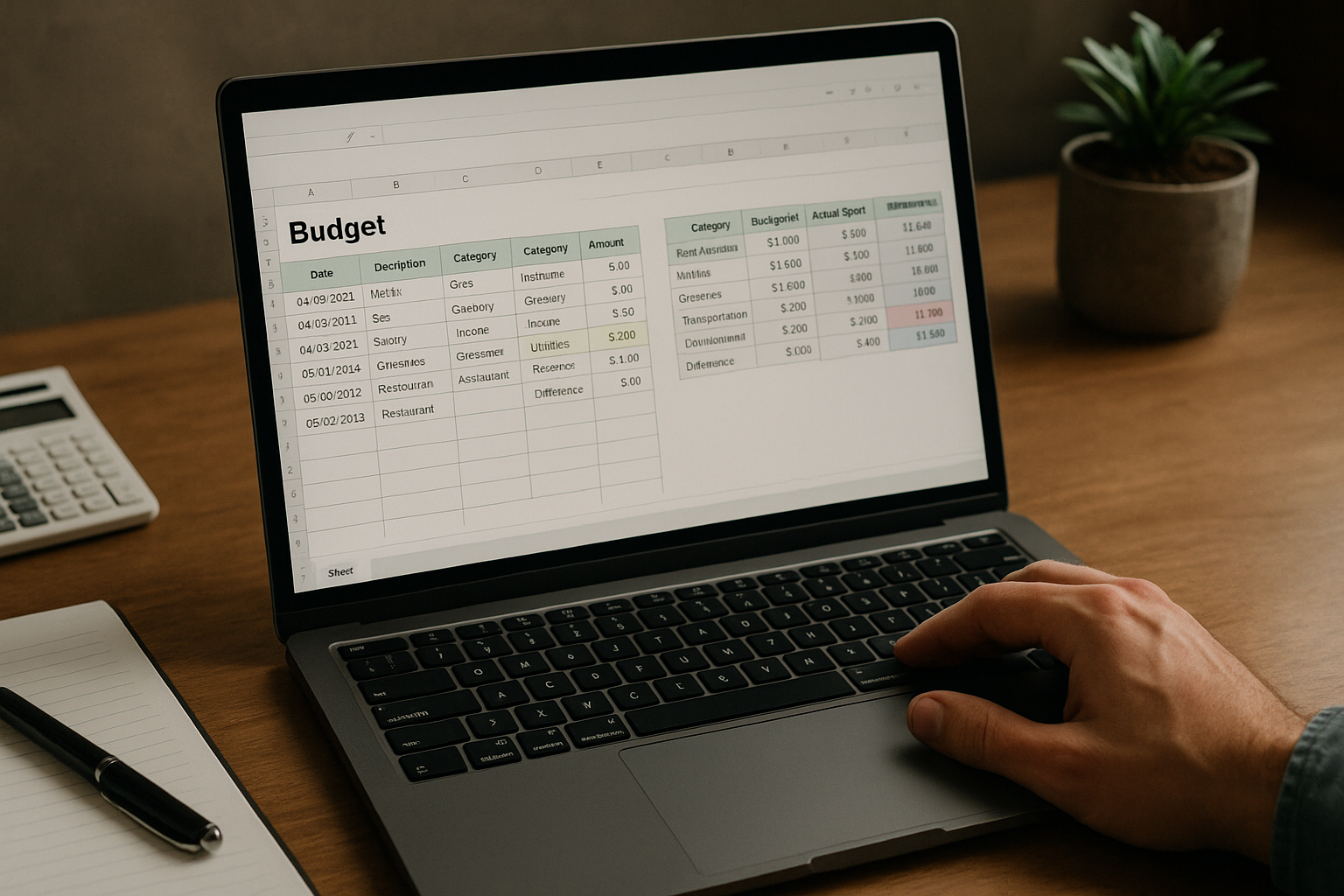Managing personal finances can often feel overwhelming, especially when expenses pile up and money seems to disappear without explanation. One of the most effective and accessible tools to take control of your financial life is a simple spreadsheet. Whether you’re a tech-savvy individual or a budgeting beginner, using spreadsheets to track spending can provide powerful insights, structure, and peace of mind.
Why Use a Spreadsheet for Budgeting?
Before diving into how to use spreadsheets, let’s first explore why they’re so effective:
- Visibility: You see where every dollar is going.
- Customization: You can tailor it to your specific needs.
- Automation: Basic formulas can calculate totals, averages, and even trends.
- Affordability: Free tools like Google Sheets and Excel Online make budgeting accessible.
- Accountability: When you track manually, you become more conscious of your spending habits.
Unlike budgeting apps that may automate everything, spreadsheets make you actively participate in your budget, which builds stronger money awareness.
Step-by-Step Guide: Building Your First Budget Spreadsheet
Here’s how to set up a practical, user-friendly spreadsheet to manage your spending.
Step 1: Choose Your Tool
Start with any of the following:
- Microsoft Excel – Great for offline use
- Google Sheets – Perfect for accessibility across devices
- LibreOffice Calc – A free desktop alternative
Step 2: Set Up Your Budget Categories
Create a simple structure with these columns:
| Date | Description | Category | Amount | Type (Income/Expense) | Notes |
Next, determine your common categories. Examples:
- Rent/Mortgage
- Utilities
- Groceries
- Transportation
- Entertainment
- Subscriptions
- Dining Out
- Miscellaneous
- Income
These categories will help you organize and analyze later.
Step 3: Enter Your Transactions Regularly
Each time you spend or earn money, log it immediately:
- Date: When the transaction occurred
- Description: What it was for (e.g., “Netflix,” “Gas,” “Salary”)
- Category: Match to one of your predefined categories
- Amount: Use negative for expenses, positive for income (or use separate columns)
- Type: Label as income or expense
- Notes: Optional, for extra context
Keeping this updated weekly or even daily makes your budget a living document.
Step 4: Use Simple Formulas for Totaling
You don’t need advanced Excel knowledge to make your spreadsheet powerful. Use simple formulas like:
=SUM(range)to total a category=AVERAGE(range)to understand average spending=IF(condition, value_if_true, value_if_false)for more complex logic- Conditional formatting to highlight overspending
For example, to calculate total groceries, you can filter your “Category” column by “Groceries” and sum the “Amount” column.
Step 5: Compare Budget vs. Actual
Add a section at the top or in a new tab:
| Category | Budgeted Amount | Actual Spent | Difference |
Update the “Actual Spent” using your data and subtract it from the budgeted amount. This will show you areas of overspending or success.
Templates You Can Use
If starting from scratch sounds intimidating, use a ready-made template and customize it:
- Google Sheets Monthly Budget Template
- Microsoft Excel Personal Budget Template
- Tiller Money (paid, but spreadsheet-based)
These often come with built-in formulas and graphs to get you started faster.
Benefits of Tracking Your Spending This Way
Once you’ve established the habit, you’ll start noticing real advantages:
1. Improved Financial Awareness
You’ll know exactly where your money goes each month — down to the cent. No more wondering why your bank balance is lower than expected.
2. Reduced Impulse Spending
Just the act of writing down an expense can make you think twice before unnecessary purchases.
3. Better Goal Tracking
Whether you’re saving for a trip, paying off debt, or building an emergency fund, your spreadsheet becomes your roadmap.
4. Easier Tax Preparation
By tracking categories throughout the year, tax time becomes less stressful — especially if you’re self-employed or freelancing.
5. Informed Decision-Making
Want to switch phone plans? Cut subscriptions? Your spreadsheet shows you the real impact on your bottom line.
Tips to Stay Consistent
Consistency is key to success with spreadsheets. Try these tips:
- Schedule a weekly budget review.
- Link your bank statements if you’re advanced and want to automate data input.
- Use charts and graphs to make trends easier to see.
- Keep your file in the cloud (like Google Drive) so you can update it from anywhere.
- Color-code categories for quick visual reference.
Mistakes to Avoid
While spreadsheets are powerful, here are a few common pitfalls:
- Waiting too long to update – Leads to missing entries and lost accuracy.
- Being too complex – Start simple, then add features as needed.
- Not backing up your file – Save to the cloud or an external drive.
- Forgetting irregular expenses – Annual fees, insurance, etc., can wreck your budget if not planned for.
When to Upgrade to Other Tools
If you outgrow your spreadsheet or want advanced tracking:
- Consider apps like YNAB (You Need A Budget), Mint, or Personal Capital
- Use plugins or scripts in Google Sheets for automation
- Combine spreadsheets with envelope budgeting or zero-based budgeting systems
But remember — many financially savvy individuals manage their entire financial life with nothing more than a thoughtfully structured spreadsheet.
Closing Advice: Simplicity Brings Clarity
Controlling your spending with a spreadsheet isn’t about tracking every cent obsessively — it’s about gaining control and understanding of your money. You don’t need to be a finance expert to get started. All it takes is a spreadsheet, a little consistency, and the willingness to make smarter decisions with your money.
Start today with the simplest layout you can manage, and build from there. Your future self will thank you.

